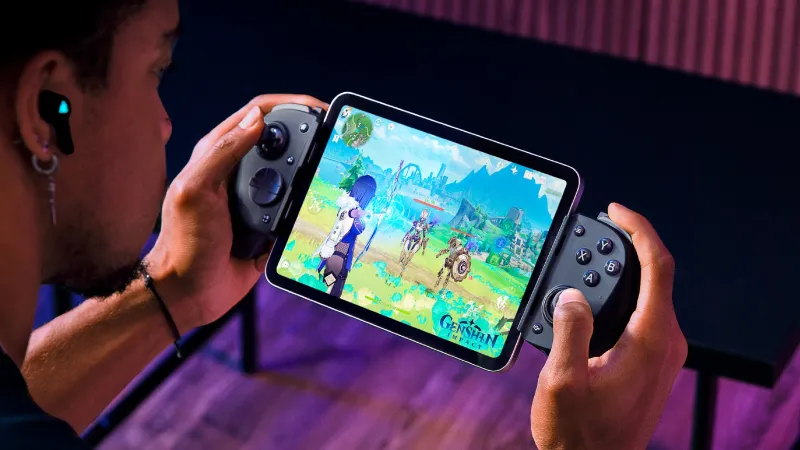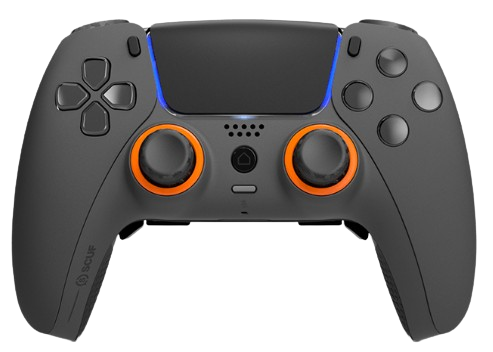The Future of Gaming is in the Cloud: A Deep Dive into Game Streaming
For decades, the world of high-fidelity video games has been defined by a hardware arms race. Whether it was the latest console from Sony or Microsoft, or a custom-built gaming PC with a bleeding-edge graphics card, playing the newest AAA games meant owning a powerful, and often expensive, piece of local machinery. This paradigm, however, is being fundamentally challenged by the rise of cloud gaming. Imagine playing the latest, most graphically demanding titles like Cyberpunk 2077 or Starfield at maximum settings, not on a roaring gaming rig, but on a Chromebook, an old laptop, a smartphone, or even a smart TV. This is not a future-gazing fantasy; it is the reality of cloud gaming today. This revolutionary technology effectively outsources the heavy lifting of game processing to remote data centers, streaming the gameplay back to your screen as an interactive video feed. It promises to democratize access to high-end gaming, breaking down the financial and technical barriers that have long defined the PC gaming and console gaming ecosystems. In this comprehensive guide, we will explore the technology behind cloud gaming, analyze its impact on the industry, and help you decide if it’s the right choice for your gaming journey.
Section 1: Understanding the Magic Behind Cloud Gaming
At its core, cloud gaming, or game streaming, operates on a principle similar to video streaming services like Netflix or YouTube, but with a crucial layer of interactivity. Instead of just watching a pre-recorded video, you are controlling the action in real-time. Understanding how this complex process works is key to appreciating both its potential and its limitations.
How It Works: From Your Controller to the Cloud and Back
When you press a button on your game controller or gaming keyboard, that input isn’t processed by a local CPU and GPU. Instead, it is sent over the internet to a powerful server in a data center, potentially hundreds of miles away. This server, part of a massive infrastructure of high-end gaming hardware, is essentially a powerful gaming PC or console blade. It receives your command, renders the corresponding next frame of the game in milliseconds, encodes it into a high-quality video stream, and sends it back across the internet to your device. Your device then decodes this video and displays it on your screen. This entire round-trip, from input to visual feedback, must happen so quickly that it feels instantaneous to the player. The success of this entire process hinges on minimizing latency, the delay between your action and the on-screen reaction. This is the single greatest technical hurdle that cloud gaming services must overcome.
The Major Players: A Competitive Landscape
The cloud gaming space is no longer a niche experiment; it’s a battleground for some of the biggest names in tech and gaming. Each service offers a different model and caters to a slightly different audience.
- NVIDIA GeForce NOW: Often considered the performance king, GeForce NOW leverages NVIDIA’s expertise in graphics cards. Its unique proposition is a “bring your own games” model. You connect your existing libraries from platforms like Steam, the Epic Games Store, and Ubisoft Connect, and stream the games you already own. Its premium tiers offer access to virtual rigs powered by RTX 4080-class GPUs, enabling ray tracing and high frame rates that rival high-end gaming PCs. This makes it a favorite among the existing PC gaming community.
- Xbox Cloud Gaming (formerly xCloud): A key pillar of the Xbox Game Pass Ultimate subscription, this service is Microsoft’s Trojan horse for bringing the Xbox experience everywhere. It doesn’t aim to be the highest-performance option but offers incredible value by providing access to a massive, rotating library of hundreds of games. The latest Xbox News confirms that many new first-party releases are available on day one, making it an excellent way to try new AAA games without a hefty download or purchase.
- PlayStation Plus Premium: Sony’s answer to the cloud gaming revolution, which evolved from its earlier PlayStation Now service. This platform focuses exclusively on the rich history and future of the PlayStation ecosystem. It allows subscribers to stream a vast catalog of PS2, PS3, PS4, and even some PS5 titles to their consoles and PC. For fans deep in the PlayStation world, it’s a fantastic way to access a back catalog and supplement their console gaming experience.
Section 2: The User Experience – Performance, Pitfalls, and Prerequisites
While the concept of cloud gaming is alluring, the actual experience is deeply dependent on factors outside of the service provider’s control—namely, your internet connection and local setup. A flawless experience for one user can be a laggy, unplayable mess for another, and understanding why is critical.

The Latency Equation: The Make-or-Break Factor
Latency is the arch-nemesis of cloud gaming. Total latency is a sum of multiple parts: the time for your input to travel to the server (network latency), the server’s processing time, the time for the video to travel back to you, and the time your own display takes to show the image (display latency). While services have optimized server processing to an incredible degree, network latency is the biggest variable. For slow-paced RPG games or strategy games, a bit of latency might be barely noticeable. However, for competitive gaming in fast-paced FPS games like Valorant or Call of Duty, or fighting games, even a few dozen milliseconds of extra delay can be the difference between victory and defeat. This is why, according to recent Esports News, professional players still rely exclusively on powerful local gaming hardware for tournaments.
Bandwidth, Stability, and Visual Fidelity
While latency is about speed, bandwidth is about quality. You need sufficient internet bandwidth to receive a high-resolution, high-framerate video stream. Here are some general guidelines:
- 1080p at 60 FPS: Requires a stable 15-25 Mbps connection.
- 4K at 60 FPS: Requires a stable 35-50 Mbps connection.
Crucially, stability is more important than raw speed. A 50 Mbps connection that suffers from frequent packet loss or high jitter will provide a much worse experience than a rock-solid 25 Mbps connection. Because you’re receiving a compressed video stream, visual quality will almost never be as pristine as native rendering on a high-end gaming PC with a top-tier gaming monitor. You may notice minor compression artifacts, especially in fast-moving scenes, similar to what you might see on a YouTube video. However, the video encoding technology has become so advanced that for most players, the visual trade-off is minimal and well worth the convenience.
Optimizing Your Local Setup
You can’t change the distance to the server, but you can optimize your home network. Using a wired Ethernet connection instead of Wi-Fi is the single most effective step you can take to reduce latency and improve stability. If you must use Wi-Fi, connect to a 5GHz network, which is typically faster and less congested than 2.4GHz. Closing other bandwidth-intensive applications on your network, like 4K video streams or large downloads, will also ensure your cloud gaming session gets the priority it needs.
Section 3: Reshaping the Gaming Industry and Its Community
Cloud gaming is more than just a new way to play; it’s a disruptive force with profound implications for the entire gaming industry, from game development to hardware manufacturing and the very culture of gaming itself.

Lowering the Barrier to Entry: The Death of the Spec Sheet?
For years, the gateway to the latest AAA games was a high price tag. A new console costs hundreds of dollars, and a capable gaming laptop or gaming PC can easily run into the thousands. This financial barrier has excluded a huge potential audience. Cloud gaming shatters this barrier. Suddenly, the minimum requirement to play a graphically intensive title isn’t a specific graphics card or processor, but a decent internet connection and a compatible screen. This trend is already being seen in the market for gaming hardware. While enthusiasts will always build powerful rigs, the casual player may no longer see the need to upgrade their graphics card every two years. Devices are even emerging that are built around this concept, such as smart gaming monitors that have cloud gaming apps built-in, allowing you to play with just a screen and a controller.
New Frontiers for Game Development and Design
The shift towards streaming opens up exciting possibilities for game development. Developers using engines like Unreal Engine or Unity can design games without being constrained by the hardware limitations of a base-model console or an average PC. This could lead to more complex simulations and richer game worlds. Furthermore, the subscription model favored by services like Xbox Cloud Gaming changes the commercial landscape. It encourages a “try before you buy” mentality, and developers featured on the service can reach millions of potential players overnight. Instant-play demos, streamed directly from the cloud, could become the new standard, eliminating the need for massive downloads and making it easier than ever for indie games to find an audience.
Expanding the Gaming Community
By making high-end gaming more accessible, cloud gaming is poised to significantly expand the gaming community. It brings in players who were previously intimidated by the technical complexities of PC gaming or couldn’t afford the initial hardware investment. This influx of new players can enrich the gaming culture, leading to more diverse online communities and a greater demand for a wider variety of game genres, from MMORPGs and MOBA games to cozy life sims. The social aspect of gaming is amplified when friends can instantly jump into a multiplayer session of Fortnite or Apex Legends together, regardless of whether one is on a high-end rig and the other is on a tablet.
Section 4: Is Cloud Gaming for You? Recommendations and Best Practices
With a clearer understanding of the technology and its implications, the ultimate question remains: should you invest your time and money in a cloud gaming service? The answer depends entirely on your needs, expectations, and circumstances.
Who Benefits Most from Cloud Gaming?
- The Budget-Conscious Gamer: If you want to play the latest game releases without spending $500+ on a new console or $1500+ on a PC, cloud gaming is an unbeatable value proposition.
- The Casual Player: For those who only play a few hours a week, a monthly subscription is far more economical than owning and maintaining expensive hardware.
- The Gamer on the Go: If you travel frequently, the ability to continue your game on a laptop, tablet, or phone is a game-changer.
- The Multi-Device Household: Families can benefit by avoiding the need to buy multiple consoles or PCs, allowing gaming on any screen in the house.
Best Practices for a Smooth Experience
- Prioritize a Wired Connection: Always use an Ethernet cable if possible. It’s the most reliable way to minimize latency and packet loss.
- Choose the Right Server: Most services allow you to manually select a server region or test your connection to find the optimal one. Pick the one geographically closest to you.
- Invest in Good Peripherals: While you don’t need an expensive PC, using quality gaming peripherals like a low-latency gaming mouse, a mechanical gaming keyboard, or a responsive game controller can make the experience feel more native.
- Manage Your Network: Ensure no one else in your household is starting a massive download or streaming 4K video while you’re in a competitive match.
Conclusion: A Powerful Complement, Not a Complete Replacement
Cloud gaming has firmly established itself as a viable and exciting third pillar of the gaming world, standing alongside traditional PC and console gaming. It is not, for the moment, a perfect replacement for dedicated local hardware, especially for highly competitive esports players who demand zero-latency performance. The reliance on a pristine internet connection remains its Achilles’ heel. However, to dismiss it as a gimmick would be a profound mistake. For millions of gamers, it represents the most accessible, affordable, and convenient way to experience the best the video games industry has to offer. It is a powerful supplement for dedicated gamers and a revolutionary gateway for new ones. As internet infrastructure improves and the technology matures, the line between playing locally and playing from the cloud will only continue to blur, forever changing how we access and enjoy our favorite virtual worlds.













